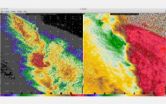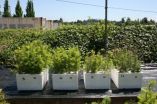(Press-News.org) University of British Columbia researchers are part of European Space Agency's Plank satellite mission that is revealing thousands of "exotic" astronomical objects, including extremely cold dust clouds, galaxies with powerful nuclei, and giant clusters of galaxies.
The international collaboration of scientists from 15 countries is presenting more than 25 scientific papers today in Paris, France, on the first results from the Planck mission. Launched in 2009, the Planck satellite is probing the entire sky at microwave wavelengths from 0.35 millimetre to one centimetre. By measuring the cosmic microwave background – the oldest source of light in the Universe –at these wavelengths, Planck has provided an unprecedented view of the sky.
Amongst the results released today is the Early Release Compact Source Catalogue, a guidebook of 10,000 extraterrestrial objects that, while appearing unremarkable through optical telescopes from Earth, may provide vital information about the structure and evolution of the Universe.
"In addition to studying the microwave background, Planck maps the 'foreground' emission from our own galaxy and all the stuff between here and the background," says UBC astronomy professor Douglas Scott, who led the UBC team that helped develop software to analyze and calibrate the vast amounts of data before they were used to create maps of the sky.
"This new information will help scientists learn about the coldest clumps of gas and dust where stars are forming, the properties of unusual forms of cosmic dust, huge clusters of never-before-seen galaxies, and how dust-filled galaxies evolve over the history of the Universe," says Scott.
Planck is a European Space Agency mission, with contributions from other agencies including the Canadian Space Agency (CSA). The CSA supports two Canadian research groups based at UBC and at the University of Toronto.
The UBC team consists of Prof. Scott and research associates Adam Moss, Jim Zibin and Andrew Walker in the Dept. of Physics and Astronomy.
Highlights from the latest research include:
A new list of the coldest clumps of gas and dust within our own galaxy: Planck's multi-colour survey allows these objects to be picked out easily. Dense cores of dust and gas were found with temperatures as low as just seven degrees above absolute zero (or -266 degrees Celsius). Now that their locations are known, follow-up studies with other telescopes will help understand how these clouds are turning into stars.
Strong evidence for the existence of what astronomers call "anomalous" dust: interstellar grains of material that behave in an unexpected way, the anomalous dust emits a different light spectrum from other thermally emitting grains. The most likely explanation is that the spectrum peaks at such short wavelengths because dust particles are spinning billions of times a second.
Clusters of hundreds of galaxies discovered through their effect on the cosmic "background": This "SZ effect," named after Russian astrophysicists Rashid Sunyaev and Yakov Zeldovich, results from the scattering of the background by hot electrons in the clusters. This action is akin to putting a coloured filter onto the microwave sky, altering the spectrum in the direction of the cluster. Planck's combination of multiple wavelength bands has allowed the detection of about 200 clusters. The Cosmic Infrared Background is a glow at infrared and microwave wavelengths, coming from the total light emitted by dust across all the galaxies in the Universe. Planck allows astronomers to study the evolution of these galaxies, by comparing variations across the sky among different wavelength bands.
INFORMATION:The Canadian Space Agency's news release is available at
http://www.asc-csa.gc.ca/eng/media/news_releases/2011/0111.asp
CONTACT:
Adam Moss
UBC Physics & Astronomy
Tel.: 604-822-2945
Email: adammoss@phas.ubc.ca
James Zibin
UBC Physics & Astronomy
Tel.: 604-822-8568
Email: zibin@phas.ubc.ca
mr-11-007
END
WEST LAFAYETTE, Ind. - Purdue University researchers have found a genetic mutation that allows a plant to better endure drought without losing biomass, a discovery that could reduce the amount of water required for growing plants and help plants survive and thrive in adverse conditions.
Plants can naturally control the opening and closing of stomata, pores that take in carbon dioxide and release water. During drought conditions, a plant might close its stomata to conserve water. By doing so, however, the plant also reduces the amount of carbon dioxide it can take in, ...
In this winter of heavy snows--with more on the way this week--nature's bull's-eye might be Oswego, N.Y., and the nearby Tug Hill Plateau.
There the proximity of the Great Lakes whips wind and snow into high gear. Old Man Winter then blows across New York state, burying cities and towns in snowdrifts several feet high. This season, however, something is standing in his way.
The Doppler-on-Wheels (DOW), a data-collecting radar dish, is waiting. This month and next, scientists inside the DOW are tracking snowstorms in and around Oswego to learn what drives lake-effect ...
The growing popularity of solar photovoltaic (PV) systems across the United States has made it more important to maximize their power input. That's why UC San Diego environmental engineering professor Jan Kleissl is working on technologies and methods that will better predict how much power we can actually harness from the sun.
In a paper recently published in the journal Renewable Energy (http://www.sciencedirect.com/science/journal/09601481), "Optimum fixed orientations and benefits of tracking for capturing solar radiation in the continental United States," Kleissl ...
New York, Jan. 11, 2011 -- While scientists believe that climate change and related extreme weather events such as drought and flooding will likely affect the earth's flora and fauna, just how much is not known. A new study by researchers Walter Jetz from Yale University and Dustin Rubenstein from Columbia University however shows an important link between the natural variation in climate conditions and complex behaviors among birds.
The study, which appears in print in Current Biology on Jan. 11, 2011, has implications for understanding how organisms may respond behaviorally ...
JACKSONVILLE, Fla. — A study by researchers at Mayo Clinic's campus in Florida and Washington University School of Medicine adds a new twist to the body of evidence suggesting human obesity is due in part to genetic factors. While studying hormone receptors in laboratory mice, neuroscientists identified a new molecular player responsible for the regulation of appetite and metabolism.
In the Jan. 11 online issue of PLoS Biology, the authors report that mice engineered not to express the lipoprotein receptor LRP1, in the brain's hypothalamus, began to eat uncontrollably, ...
The opening of buds on Douglas-fir trees each spring is the result of a complex interplay between cold and warm temperatures during the winter, scientists with the U.S. Forest Service's Pacific Northwest Research Station have found.
Their research—which is featured in the December issue of Science Findings, a monthly publication of the station—led to the development of a novel model to help managers predict budburst under different scenarios of future climate.
"We take it for granted that buds will open each spring, but, in spite of a lot of research on winter dormancy ...
San Diego, CA, January 11, 2011 – Launched on December 2, 2010, Healthy People 2020 is an ambitious, science-based, 10-year agenda for improving the health of all Americans. A key component, Education for Health, is an educational roadmap to achieve the Healthy People 2020 goals. Formulated by the Healthy People Curriculum Task Force, this set of new and revised educational objectives provides a vehicle for promoting the discussion and progress that will be needed to achieve an integrated, seamless approach to education for health for the American public as well as for ...
ITHACA, N.Y. — Scientists have identified the genes related to leaf angle in corn (maize) – a key trait for planting crops closer together, which has led to an eight-fold increase in yield since the early 1900s. (Nature Genetics, Jan. 9, 2011.)
The study, led by researchers from Cornell and the U.S. Department of Agriculture – Agricultural Research Service (USDA-ARS) at Cornell and North Carolina State University, is the first to relate genetic variation across the entire maize genome to traits in a genomewide association study. The researchers have so far located 1.6 ...
Newly released findings of a multinational survey conducted on behalf of the International Osteoporosis Foundation (IOF) show clear disparities between patients' and doctors' perceptions of osteoporosis and its management.
The 13-country survey of 844 postmenopausal patients over 55 years of age and 837 doctors investigated gaps between patient and doctor understanding of the emotional and physical impact of osteoporosis; identified barriers to patient adherence; and sought to understand the ways in which osteoporotic patients can better share and obtain information about ...
Researchers from Rice University and Baylor College of Medicine (BCM) have broken one of the major roadblocks on the path to growing transplantable tissue in the lab: They've found a way to grow the blood vessels and capillaries needed to keep tissues alive.
The new research is available online and due to appear in the January issue of the journal Acta Biomaterialia.
"The inability to grow blood-vessel networks -- or vasculature -- in lab-grown tissues is the leading problem in regenerative medicine today," said lead co-author Jennifer West, department chair and the ...


